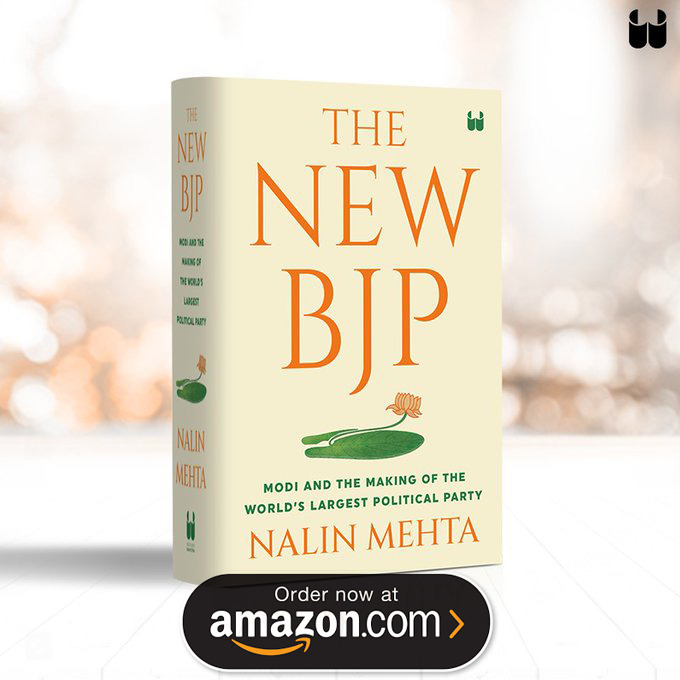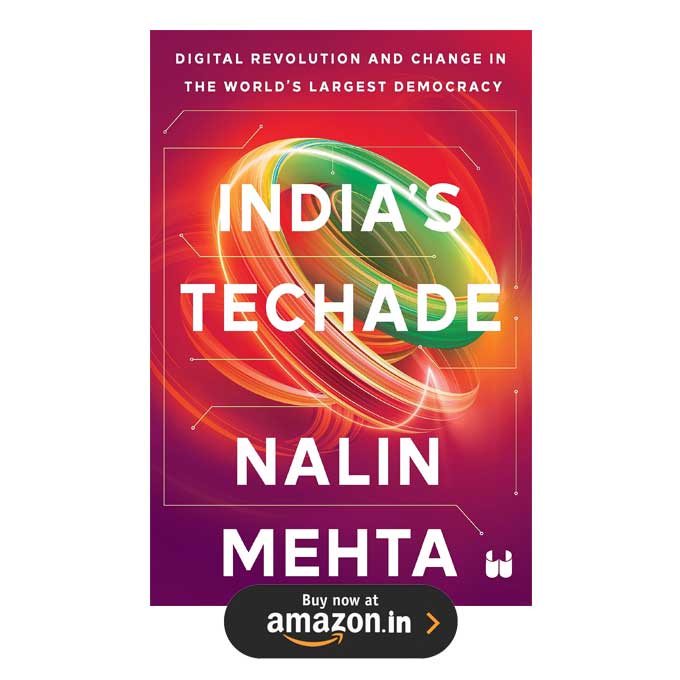For television, the 1990s began with a worried bureaucrat in the ministry of information and broadcasting submitting a file to his minister on how to stop what was then still called the “satellite invasion”. Science fiction writer Arthur C. Clarke’s 1945 vision of a satellite in geosynchronous orbit solving the global broadcast distribution problem suddenly seemed realizable with Hong Kong businessman Li Ka-Shing’s decision to invest in AsiaSat-1. It was the first commercially available satellite that could simultaneously broadcast to television audiences from Turkey to Japan and his newly launched Star TV intended to target the wealthiest 5% of Asian elites in the 38 countries where its signal reached.
V.P. Singh was still in power and his information minister P. Upendra presciently commented on the file, “You cannot stop the sun by holding an umbrella. The more you try, the more you encourage people to watch.” Television was still a jealously guarded Doordarshan monopoly, accruing from the colonial 1885 Indian Telegraph Act, and these two trends—that of a protectionist state deploying a worthless umbrella, and that of satellite television as a resplendent idea whose time had come—encapsulated the story of the decade.
The outdated umbrella attitude was best articulated by then prime minister P.V. Narasimha Rao who, two years after the fall of the Babri Masjid, abruptly cancelled the launch of DD3, designed as an upmarket current affairs channel with independently produced news bulletins to counter the BBCs and CNNs of the world. It is difficult to imagine now in the cacophony of the more than 80 news channels that animate India today but his reasoning was revealing: “We cannot have live broadcasts. It is too dangerous.” Used to seeing Doordarshan as a continuous rolling advertisement for the ruling party, Rao found it difficult to envisage live news where anyone could say anything against the government without fear of censorship.
Satellite TV didn’t come to India in a vacuum. Through the 1980s, Doordarshan had built up a mass audience. TV-watching families in India increased from just 2 million at the time of the 1982 Asiad to 34 million by the time of the Gulf War in 1991. Programmes like Hum Log had not only established the potential of the soap opera, they had also shown the magic of television as a vital cog in the Indian consumer economy—as a “selling medium”, to quote CBS founder William Paley. Apart from family planning messaging couched as entertainment, Hum Log also simultaneously launched the career of Maggi noodles in India, its prime sponsor, and ensured that advertisers flocked to sponsor programmes like Buniyaad, Nukkad and Khandaan. Ramayan and Mahabharat changed the meaning of Sunday mornings and by the time Star arrived, India was a TV market ripe for the picking.
Upendra’s successor as information minister, Ajit Panja, rhetorically raised the spectre of a new cultural colonialism, publicly musing if India would “succumb exactly as we did 250 years ago to gunpowder”; the man who followed him, K.P. Singh Deo, railed against a “diabolical invasion from the sky”; but the genie was out of the bottle. Within six months of its launch, Star announced that India had turned into its largest market.
In political and economic terms, satellite TV, an illegal medium till the mid-1990s, virtually became the show window of the economic reforms. Foreign investors in the early 1990s were still not sure about the government’s intentions, initial foreign investments till mid-1992 were very low and any serious attempt to clamp down on the channels would have been too risky. As a cultural product then, satellite TV worked as an ideal marketing tool for India’s liberalization. Typical of the jugaad nature of Indian reform, sections of the state, like the ministry of information and broadcasting, fought it tooth and nail, while others, like VSNL, embraced it wholeheartedly.
The 70,000 or so cable operators—“splendid pirates”, as Rupert Murdoch called them—that sprang up across the country symbolized the entrepreneurial energies at the bottom end of the new TV ecosystem that emerged, just as people like Subhash Chandra, formerly a rice trader, typified its top end. At a time when traditional media houses were too hidebound to see the new opportunity, Chandra took his Zee TV to the stock market. It became the first major Indian media firm to be listed on the Bombay Stock Exchange in 1993.
Before the Supreme Court finally ended the state’s legal monopoly over the airwaves in 1995, Zee and numerous channels that came up in the regional languages had to contend in the early 1990s with the legal restrictions against private broadcasting in India. A typical example is the Malayalam Asianet which used to broadcast into India from the US military base at Subic Bay in the Philippines by flying a courier daily from Kerala to Manila with recorded programme tapes for the next day. From Manila, the courier took a helicopter ride every day to the Subic Bay TV centre, for onward transmission of the tapes back into India.
The 1990s also shaped the major facets that define Indian TV today—localization, Bollywood, cricket and news. Each of these had major social consequences. Star had been the catalyst but once the initial novelty wore off, its English-only diet of Oprah and The Bold and the Beautiful could only take it that far. The music channels, MTV and V, quickly indigenized with Hinglish and predominantly Hindi music videos, but Star’s next big industry-defining move of Kaun Banega Crorepati and the “saas-bahu” serials wouldn’t come till the early 2000s. For most of the 1990s, Zee controlled the market. Language wasn’t the only reason. Zee officials spoke openly about how they consciously strove to keep misery off their channel, in contrast to the developmental images that predominated on Doordarshan. A new generation of soap operas like Tara drove its early success but it also packaged itself as an unabashed mass entertainment channel, relying heavily on the popular culture of Bollywood.
One of Murdoch’s innovations in global TV has been the use of sport as a battering ram to capture markets. News Corp.’s decision to choose cricket as the lynchpin of its strategy in India was to change the face of the global game itself when ESPN announced its entry in 1993 with $30 million (around Rs 132 crore now) for cricket rights. The discovery of cricket as one of the prime markers of Indian-ness subsequently combined with the burgeoning muscle of Indian capital to turn India into the spiritual and financial superpower of the game. So intertwined has cricket been with the TV story that even the historic 1995 Supreme Court decision that finally freed the airwaves from government control was the result of a dispute over cricket rights between the Board of Control for Cricket in India (BCCI) and Doordarshan for a tour by the West Indies.
In 1988, when Prannoy Roy started The World this Week on Doordarshan, he was not allowed to even touch domestic political news. In the old command economy of the times, this was seen as too sensitive. Yet, exactly a decade later, satellite technology allowed him to start the first 24-hour news channel. Star News (then run by NDTV) was initially turned into a 24-hour channel for only three months in 1998 to cover the general election but its success meant that it continued. The real expansion in TV news was to come in the 2000s but the innovations of the 1990s showed what was possible. In 1990, TV had accounted for only 16% of the total ad spend in India. By 2000, its share was up to 37% even as the advertising pie itself increased more than sevenfold. Capitalized billings in the advertising industry grew from Rs 9.3 billion in 1990-91 to Rs 68.3 billion by 1999-2000. It was a decade that established TV at the epicentre of Indian capitalism.
It was also a decade that set the trend for the limitations of the ratings economy that bind Indian TV. Among the great might-have-beens of TV in the 1990s was the death of thoughtful, critical programming like, for instance, Chandraprakash Dwivedi’s Ek Aur Mahabharat. Its alternative retelling of the epic as essentially an earthy tribal tale was pulled off the air because it didn’t prove too hot on the TRP meters. Despite its limitations, Doordarshan had still managed to produce some epic programming.
There is much that is wrong with Indian satellite TV today yet there is no doubt that it has brought a new and revolutionary theatre to the daily life of India. People discovered new ways to think about themselves and to participate in the life of the nation that would have been unthinkable a generation ago. The revolution has made possible new ways of imagining identities and engaging with the state and none of this would have been possible without the 1990s.
Nalin Mehta is the founding joint editor of the journal South Asian History and Culture and author of India on Television

